RED’s KOMODO camera – a sleek, minimalist cube packing a 6K sensor and all of the image quality we’ve come to expect from RED – is a prime example of how products from different manufacturers can complement each other while integrating with a camera system. In this blog, we’ll explore my choices for a customized KOMODO build with hardware and accessories from Wooden Camera and SmallHD.
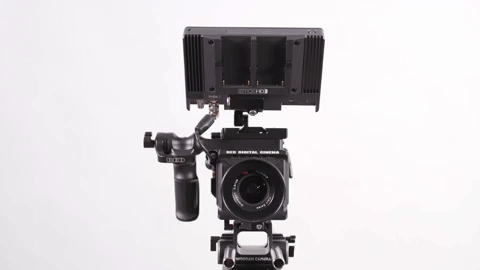
Wooden Camera
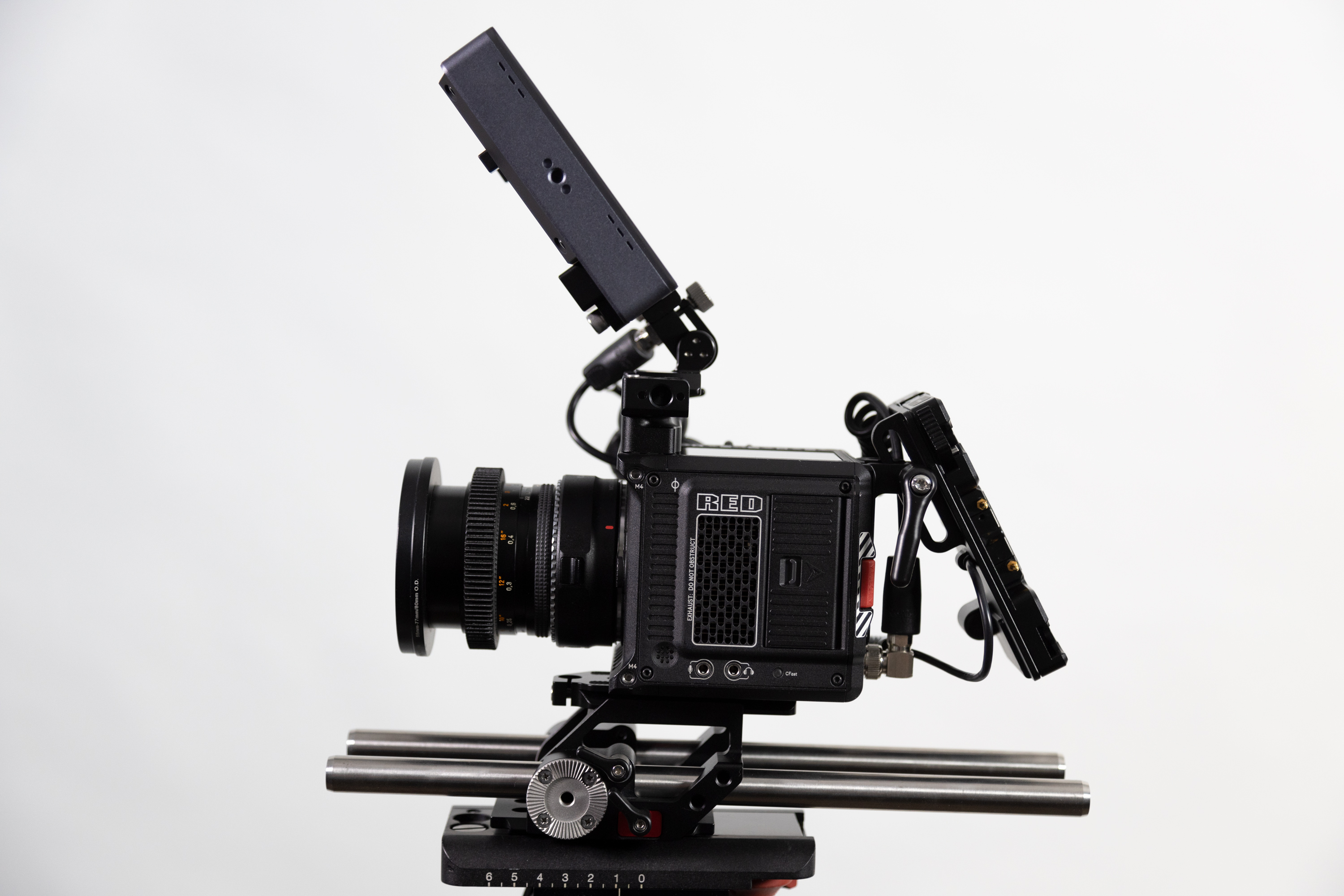
Wooden Camera’s RED KOMODO Accessory KIT is a flexible solution for camera support as well as providing numerous mounting points for accessories and rigging options. I chose the Pro version, which includes a LW 15mm Baseplate with receivers for 15mm lightweight rods, a Top Mount kit that attaches to the body with captive screws (and has a mini-dovetail clamp that conforms to the ARCA Swiss standard) as well as the Battery Slide plate in Gold Mount.
I really like RED’s own first-party KOMODO Outrigger, a slick pistol-grip side handle with integrated run/stop that provides a secure grip for waist-level shooting. Wooden’s Top Mount kit includes hardware for attaching on top of the KOMODO Outrigger handle itself, forming a secure “sandwich” with no loss of functionality, a great solution.
The Battery Slide plate cleverly attaches to the left-hand (native) battery bay on the KOMODO, for when larger batteries and accessory power connections are needed. It provides three D-Tap connections that can share up to 5.8A between them. If accessories try to draw more than 5.8A, a digital fuse will trip, however the camera body will remain powered via the plate’s right-angle Lemo connector going to the camera's DC-IN port. The plate’s unique sliding action with a lockable screw handle allows the battery to be positioned at a variety of angles to suit the operators grip and shooting style. Additionally, an extension is available which allows for hot-swapping batteries mounted on the plate by leaving room for a BP-955 in the camera’s native right-hand battery bay.
I chose to place the Monitor Hinge in the Top Mount’s ARCA Swiss dovetail slot. It also features a direct 1/4-20 mount for displays from SmallHD.
SmallHD
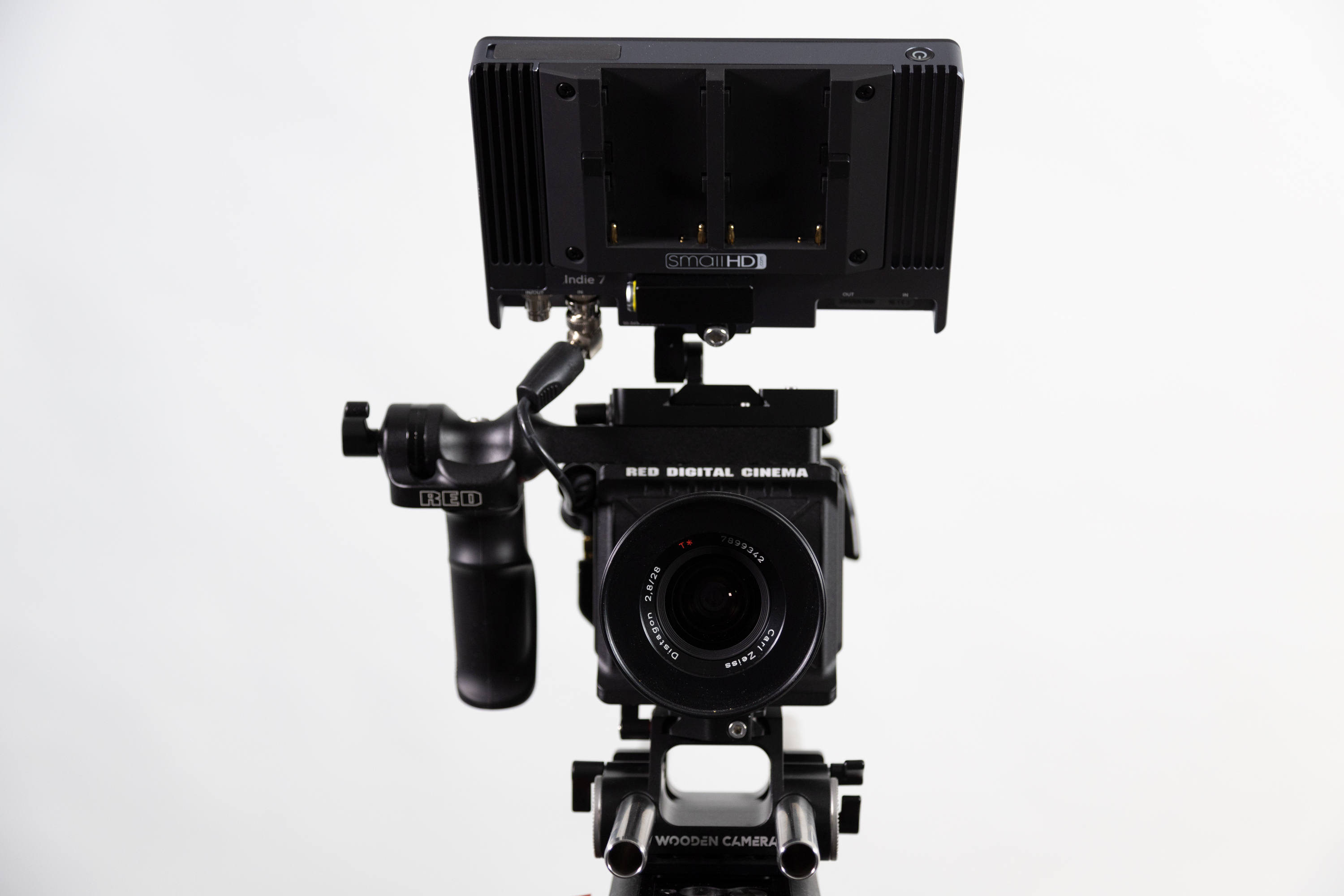
I chose SmallHD’s Indie 7 monitor to attach to the Wooden Camera Monitor Hinge and Top Mount. The Indie 7 has a peak brightness of 1000 nits for good visibility in most daylight situations, covers 100% of the REC709 color space, and provides a wide 160° viewing angle with 1920x1200 resolution. It’s also capable of receiving a 4K signal. It features two SDI terminals, one of which can be configured as an input or an output, and HDMI 2.0 input and output as well as a micro-USB port. With the KOMODO KIT, the micro-USB port is transformed into a 5-pin Lemo-type connector (securely attached with locating pins) for interface with the camera.
The Indie 7 KOMODO Kit version integrates seamlessly and provides a custom touch-based user interface for camera control via the RED Camera Protocol (RCP2) and SmallHD’s PageOS 4 software. Camera Control functionality is enabled with a software license and a cable that goes from the 9-pin EXT terminal on the camera to the 5-pin connector on the display. The camera control touch points are overlaid onto the SDI feed from the camera, making the whole experience very familiar to users of RED’s DSMC2 and earlier camera systems. No more having to fight with visibility or access to KOMODO's (excellent but small) top screen once the camera is rigged up.
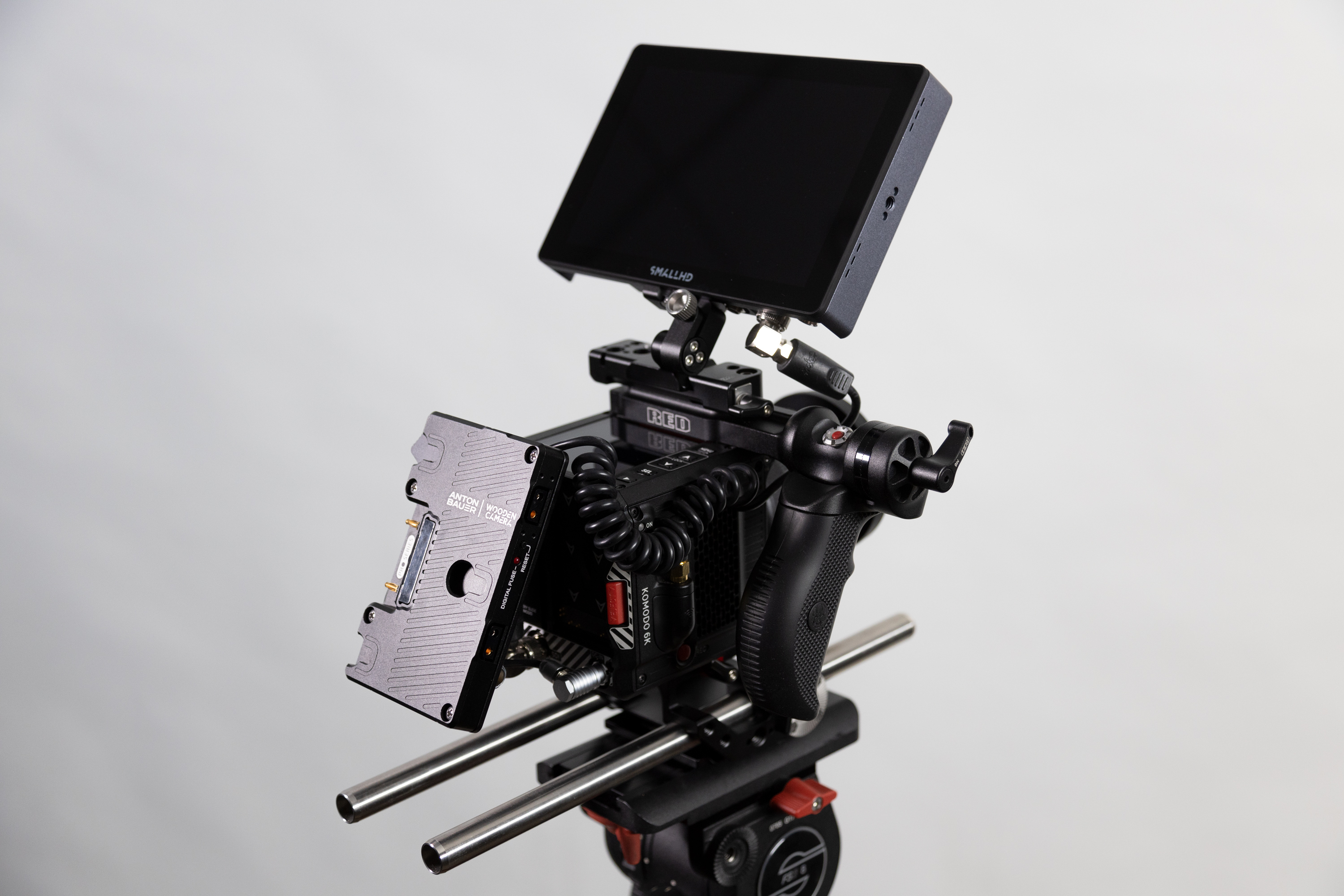
I really appreciate the thought that went into both the design as well as the integration of these components when rigged onto the KOMODO. It's always a welcome suprise to find that your favorite components from different manufacturers all work together seamlessley. Together, they provide a lot of flexibility and synergy with one another as well as improving the camera's functionality for a wide range of shooting scenarios.















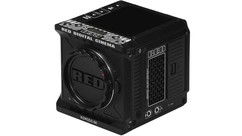


AbelCine encourages comments on our blog posts, as long as they are relevant and respectful in tone. To further professional dialog, we strongly encourage the use of real names. We reserve the right to remove any comments that violate our comment policy.
AbelCine publishes this blog as a free educational resource, and anyone may read the discussions posted here. However, if you want to join the conversation, please log in or register on our site.
We use Disqus to manage comments on this blog. If you already have a Disqus account registered under the same email as your AbelCine account, you will automatically be logged in when you sign in to our site. If not, please create a free account with Disqus using the same email as your AbelCine account.